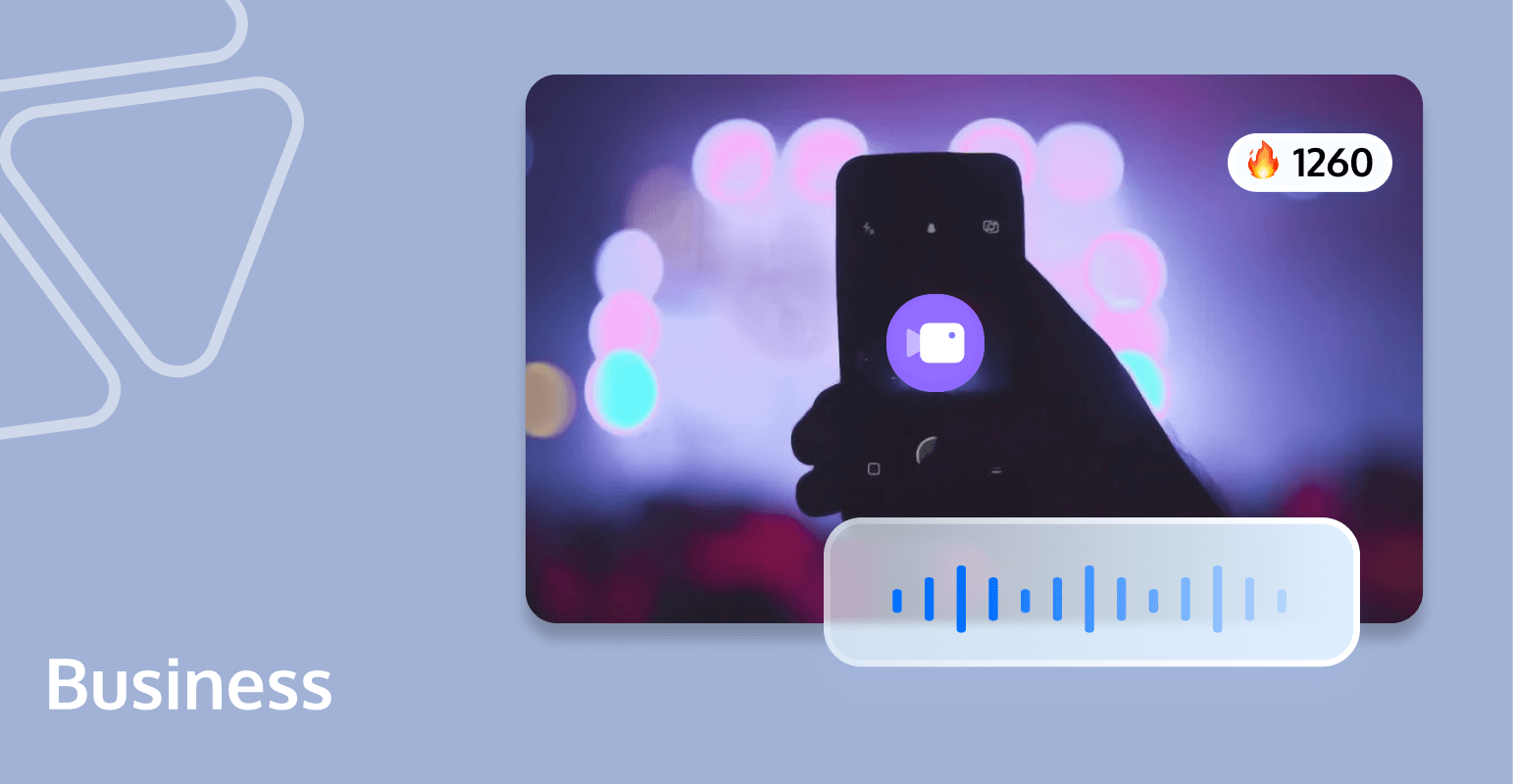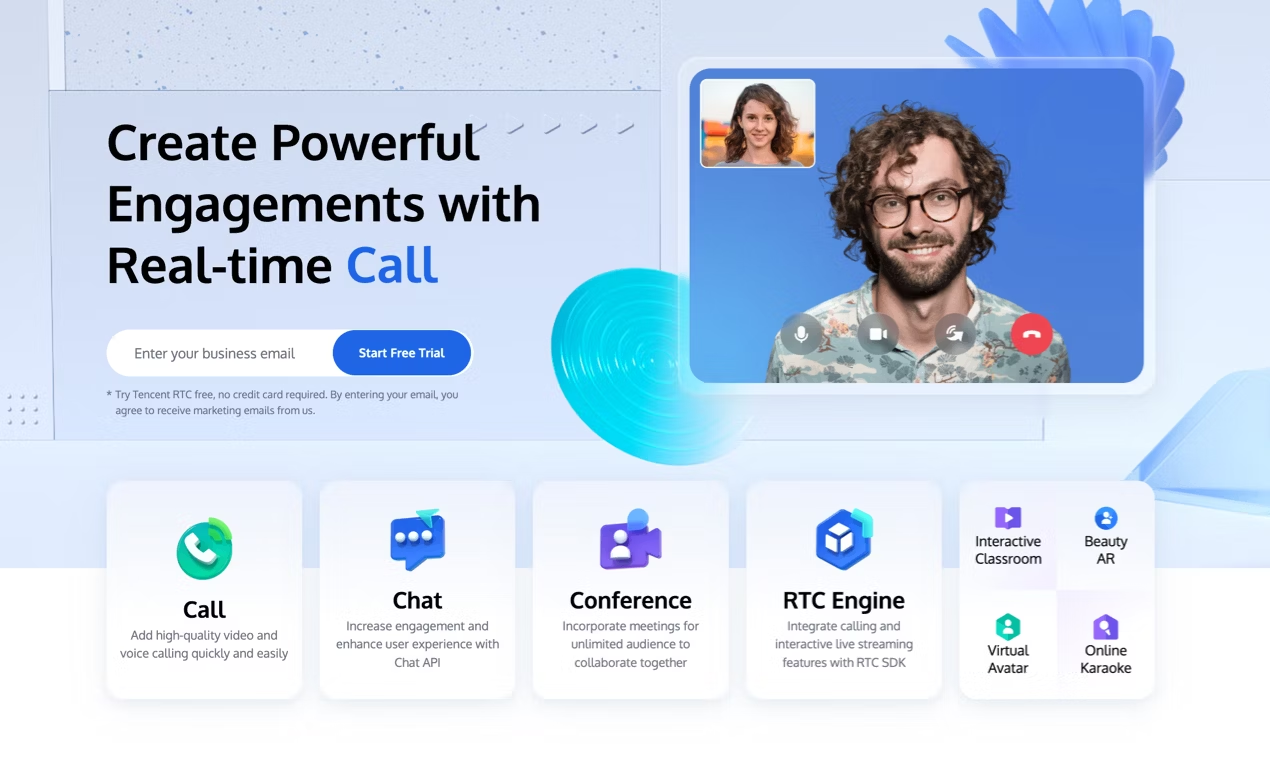
In today's digital era, real-time interaction has become increasingly popular, mainly due to the rise of live-streaming platforms. A Live Streaming SDK (Software Development Kit) is a crucial component at the core of this revolutionary technology. This comprehensive guide aims to give you an understanding of what a Live Streaming SDK is, the various types of Live Streaming SDKs available, how to choose the right one for your specific needs, step-by-step instructions on integrating it into your platform, and a special focus on the unique advantages of Tencent RTC Live Streaming SDK. Let's get started!
What is a Live Streaming SDK?
Live streaming has become increasingly popular, with applications spanning various industries such as entertainment, education, and events. An estimated 2.72 billion people will watch video on their mobile devices in 2023, making live streaming an indispensable tool for businesses and organizations. Live Streaming SDKs (Software Development Kits) play a crucial role in enabling developers to create live streaming applications. These toolkits provide a set of tools, libraries, documentation, code samples, and guidelines to make the development process more straightforward for integrating live streaming features into applications.
A Live Streaming SDK simplifies the process of integrating streaming capabilities with mobile devices or other platforms. It allows developers to create seamless, high-quality streaming experiences for end-users, catering to the growing demand for video content consumption across various platforms. By leveraging SDKs, developers can now create applications that enable live streaming and enhance user engagement.
Types of Live Streaming SDKs
Explore the diverse landscape of live streaming SDKs, including open-source, commercial, and cloud-based solutions, as we compare their unique advantages and challenges to help you choose the right fit for your streaming needs.
- Open-source SDKs
These SDKs are publicly available for developers to use, modify and distribute freely. One advantage of open-source SDKs is the ability to independently customize or modify the code to fit specific needs. However, open-source SDKs may lack in-depth documentation, regular updates, or dedicated support, which can limit their functionality and reliability.
- Commercial SDKs
Companies that specialize in live streaming services often provide SDKs, which may come at a cost. Commercial SDKs typically offer more extensive features, reliable performance, and dedicated support compared to open-source alternatives. However, they might not be as flexible in terms of customization and may require licensing fees.
- Cloud-based SDKs
Cloud-based SDKs are hosted and managed by third-party providers, which can be beneficial for developers who want a hassle-free solution with minimal infrastructure requirements. By leveraging cloud-based SDKs, developers can access a range of streaming capabilities without needing to manage servers or handle complex integrations with other systems. One potential downside is that cloud-based SDKs may not offer the same level of control or customization as open-source or commercial alternatives, and they often come with subscription fees or usage-based costs.
How to Choose a Live Streaming SDK
Selecting the right Live Streaming Software Development Kit (SDK) is crucial for ensuring seamless, high-quality broadcasts; consider the following factors to make an informed decision.
- Platform Compatibility: The platform compatibility of the SDK (Software Development Kit) is an essential factor to consider. The SDK you choose should be compatible with the platform you're targeting—be it Android, iOS, or web. Cross-platform support is equally beneficial because it will allow your app to work seamlessly across different platforms without requiring duplicate coding efforts.
- Pricing Model: Live streaming SDKs come in various pricing models, including one-time purchase, monthly or annual subscription, or 'as-you-go' pricing based on usage. Choose the one that fits your budget, keeping in mind potential future scalability and profitability of your app.
- Reliability: The reliability of your live streaming service significantly impacts user experience. Hence, the SDK you select should ensure stable and high-quality streaming. Check whether the SDK supports adaptive bitrate streaming, which automatically adjusts video quality based on a viewer's network conditions.
- Support and Documentation: Detailed documentation, tutorials, and dedicated support are immensely beneficial, especially when you're integrating the SDK into your app and troubleshooting potential issues. It helps shorten the learning curve and handle any potential hiccups during the implementation.
How to Integrate a Live Streaming SDK
Here are the essential steps to seamlessly integrate a live streaming SDK into your application, enhancing real-time user engagement.
Step 1: Select the Right SDK
Start by picking the right SDK that aligns with your requirements regarding platform compatibility, pricing, reliability, and support. This first step ensures a smooth transition into the development phase.
Step 2: Setup Development Environment
Prepare your development environment according to the platform (Android, iOS, or Web) you're targeting. You may need to install specific softwares or libraries and ensure that you have the required permissions and setup on your systems.
Step 3: Incorporate the SDK into Your Project
Once your environment is set up, it's time to incorporate the SDK into your project. This process usually involves downloading the SDK, adding it to your project repository, and configuring it according to the specifics of your application.
Step 4: Use SDK's APIs to Embed Live Streaming
With the SDK incorporated into your project, you can now utilize the various APIs provided by the SDK to embed live streaming functionality into your app. This might involve creating a streaming interface, embedding video players, or setting up live streaming channels.
Step 5: Testing
After integrating the SDK, thoroughly test the live streaming functionality in various real-world scenarios. Check for stream quality, latency, load capacity, and various other factors to ensure a smooth and enjoyable user experience.
Step 6: Launch and Monitor Your Live Streaming App
After successful testing, launch your app. Continuously monitor its performance and keep an eye out for any irregularities or potential errors that might occur. Always keep your application updated with the latest version of the SDK for optimal performance and security.
Tencent RTC Live Streaming SDK Advantages

The Tencent RTC live streaming SDK provides numerous advantages for developers who want to integrate live streaming capabilities in their applications:
- Seamless Integration
With an open-source video live streaming scenario UI component, integrating TUILiveRoom into your project allows for uncomplicated support for an interactive video live streaming. Only a few lines of code are required, making it very accessible even for those relatively new to coding.
- High Stability and Availability
Tencent RTC is designed to handle tens of millions of simultaneous requests, ensuring a minimum 99.9% service availability as per the SLA. The network architecture is remarkably elastic and scalable, validated by the extensive usage of tens of thousands of enterprise users.
- Optimized Global Deployment
Tencent RTC is accessible in more than 200 countries and regions, with special optimization for networks in Southeast Asia, the Middle East, and North America.
- Ensuring Data Security and Compliance
Tencent RTC holds certifications including ISO27017, ISO27018, ISO27701, CSA STAR, and NIST CSF, adhering to global standards for robust data security and compliance.
- Comprehensive Coverage
Tencent RTC SDK supports different platforms such as Android, iOS, and mini-program platforms. This range ensures comprehensive coverage, allowing the app to cater to the needs of the diverse variety of users.
- Advanced Features
Tencent RTC SDK supports advanced features like Screen Sharing, On-Cloud Recording, Special Effects and Beauty Filters, co-anchoring, etc. For example, an audience member can send a co-anchoring request to the host, providing interactive and engaging experiences to users.
- Built-in Security
The SDK security signature (UserSig) is calculated based on SDKAppId, userId, and Secretkey ensuring a built-in and advanced security system. This feature eliminates the need to build an independent security framework, saving developers resources and time.
- Cross-Room Communication Support
Anchors from different rooms can communicate with each other by calling TRTCLiveRoom#requestRoomPK. This makes it possible to have engaging broadcasts with multiple hosts across different rooms, improving the interactivity and dynamism of live streams.
Conclusion
Taking all into consideration, Live Streaming SDK greatly boosts the potential of your streaming capabilities, with its diverse types and integration strategies. The exemplary advantages offered by Tencent RTC highlight the immense value and possibilities it holds for harnessing the power of the evolving digital world. Whether for personal or professional use, fostering media-rich engagement or expanding business reach, the implementation of an SDK could truly transform your live streaming journey.
If you have any questions or need assistance, our support team is always ready to help. Please feel free to Contact Us or join us in Telegram.
FAQ
Here are some commonly asked questions about Live Streaming SDK.
Which is the best SDK for live streaming?
The best SDK for live streaming can vary based on your specific needs such as features, pricing, and more. The top 10 live streaming APIs & SDKs include Tencent RTC, Video SDK, Mux, Agora, api.video, AWS IVS, DaCast, Wowza, Vonage, and Dolby.io. Each has its own strengths. Thus, you must explore each provider's offer and select the one that best fits your unique requirements.
How to quickly live streaming app?
To quickly create a live streaming app, you can use a reliable live streaming SDK such as Tencent RTC, Wowza, Agora, or Mux. Initially, you must set up the development environment by downloading and installing the SDK. Next, set up the server (if required) and then integrate the SDK into your app using the SDK's APIs. Ensure you set your app's permissions to access the camera and microphone. Finally, test the app thoroughly to ensure the streaming is smooth and without interruptions. It's important to note that a strong understanding of coding and app development is mandatory to carry out this process.


